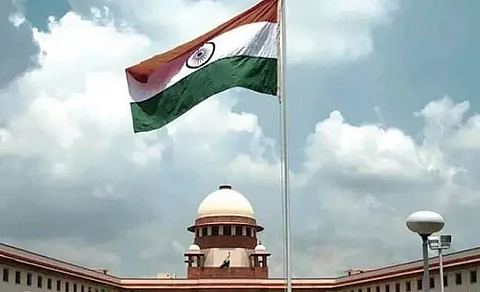
- Home
- Live Blog
- Breaking News
- Top Headlines
- Cities
- NE News
- Sentinel Media
- Sports
- Education
- Jobs

STAFF REPORTER
GUWAHATI: How much does Assam adhere to Supreme Court guidelines to reduce accidents and fatalities? The SC-constituted committee that issued these guidelines to every state will assess the accident-related measures in Assam next month.
Of the 6,737 accidents in the state last year, 2,813 people lost their lives, besides injuries to many. The EC guidelines spell out that the police, district administrations, the Transport Department, the Health Department and others need to work in tandem with each other to implement the road safety guidelines. However, the state is far from implementing them.
A Transport Department source said that the SC committee on road safety would visit the state on December 15, 2021, and verify a few accident-prone spots, besides assessing the situation with all stakeholders.
The source said, "It is not that we have not at all implemented the road safety guidelines issued by the apex court. We have implemented some of them, but not all. Since many departments are involved in this process, the Transport Department alone cannot implement all the guidelines.
"District Road Safety Committees (DRSCs) headed by deputy commissioners are the ones that need to implement most of the guidelines."
Some of the SC guidelines are (i) setting annual targets to reduce road accidents and fatalities, (ii) formulation of strategies to tackle road accidents and fatalities, (iii) identifying black spots and vulnerable segments, (iv) road safety audit, (v) devising strategies for traffic law enforcement, (vi) highway patrolling (vii) deploying ambulance with equipment and paramedical staff at regular intervals on highways, and (viii) mapping trauma centres and hospitals vis-à-vis highways to ensure the proper use of the golden hour (the first one hour after an accident) for treatment.
According to sources, the first one hour after an accident is crucial for the survival of the injured. However, due to the lack of ambulances and lack of information to the authorities concerned, injured ones often do not get treatment at the right time. It increases fatality. Deployment of the ambulance with paramedical staff on highways, setting up of trauma centres near highways can ensure proper use of the golden hour for treatment, the sources added.
Bystander apathy also adds to the problem. During accidents, onlookers are generally reluctant to take the injured ones to hospitals immediately. They do not want to get involved in police affairs. To erase this apathy, the Supreme Court advised the state governments to reward people who take injured in accidents to hospitals if the injured ones survive.
The people residing near accident-prone areas or black spots need the training to act as Samaritans. They can extend the best possible help to injured ones right from informing the police to taking them to the hospital. Only awareness cannot reduce fatalities as post-accident promptness has much to do.
Also Watch: